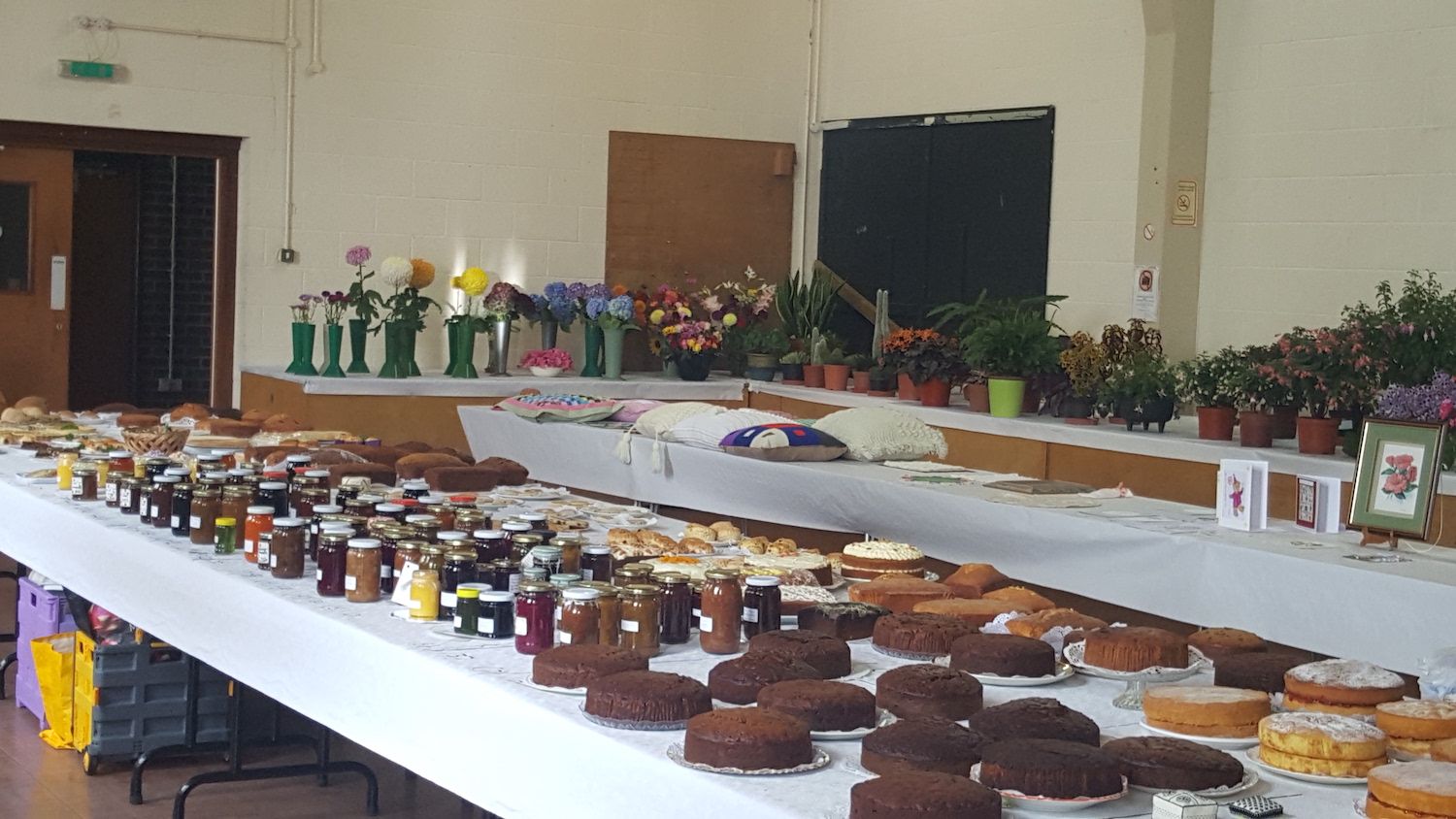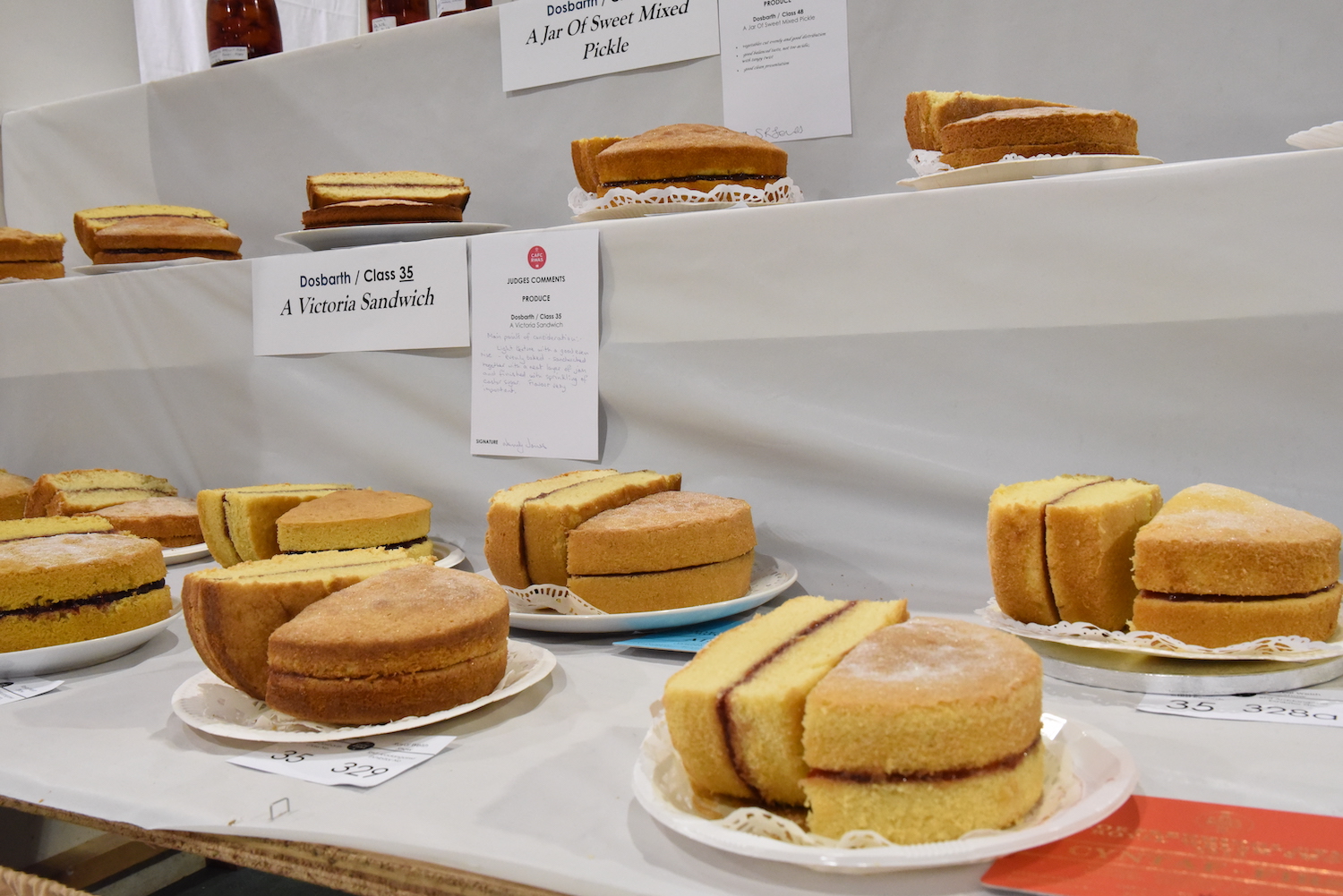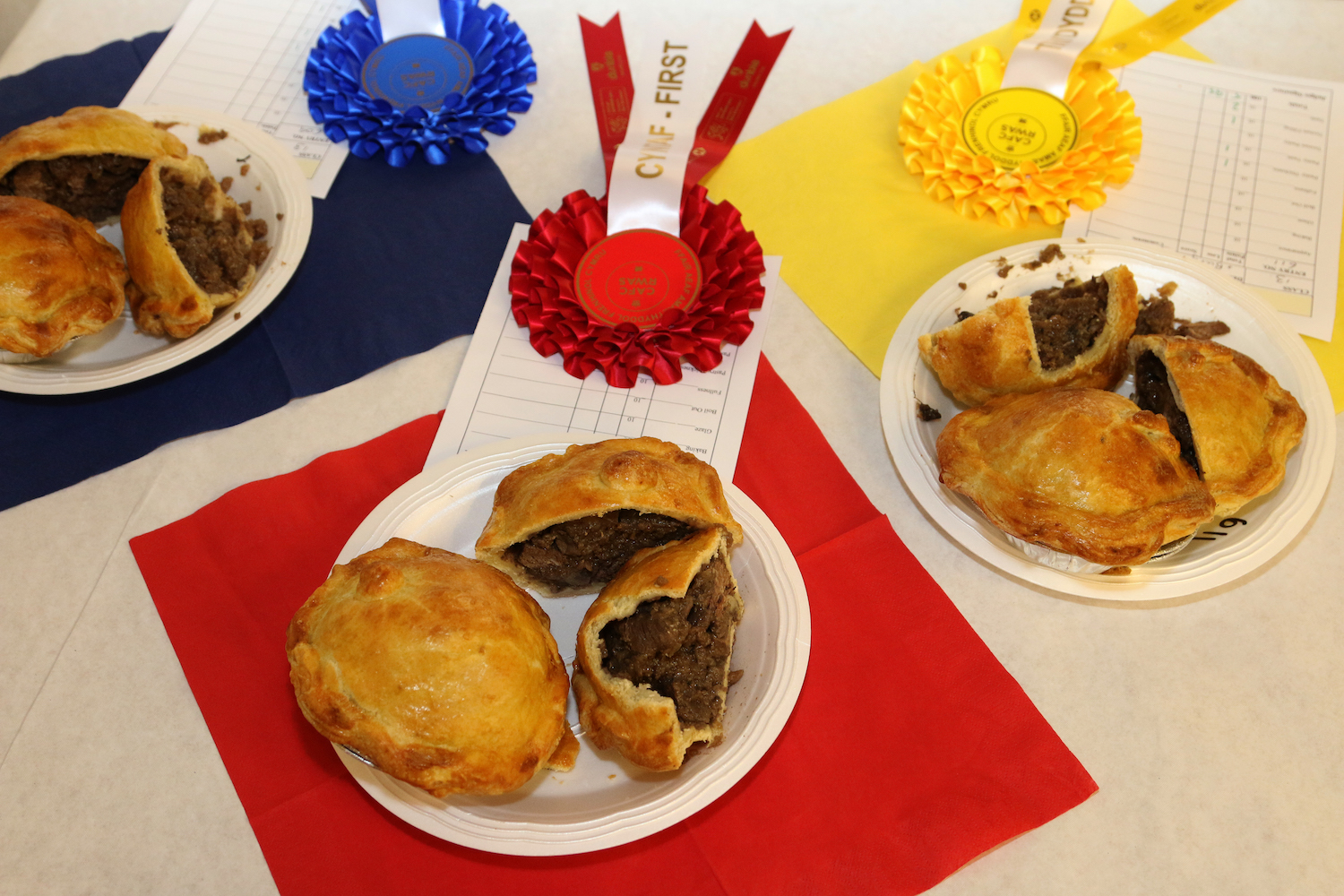It’s that time of year again when people up and down the country get seriously competitive, as normal people get bitten by the competitive bug and contract village show fever.
I’ve won a string of awards for pies, marmalades, cakes and jams in national competitions, and a few village show competitions too. I have also acted as a judge an can assure you it’s no less stressful. It can be a difficult task to judge such a variety of high-standard entries.
The worst competition class I have ever had to judge was the children’s pet rabbit class – so many hopeful faces and simply not enough winning rosettes.
Even with more than twenty years of experience entering various competitions, I still get butterflies in my stomach when I submit my entries to a village show.

What is a Village Show?
The Competition
Lest you think these village shows are not taken seriously, there is no place for soggy bottoms, sunken sponges, or stunted parsnips. Exhibitors at all shows will testify that growing produce to reach perfection at a particular time is never easy, and that tickling the judges’ taste buds with home-produced preserves and bakes is tricky business, especially with our unpredictable British weather.

Popularity
Village shows and produce competitions over the past few years have enjoyed a real resurgence and have seen many younger generations of men and women setting their sights on winning a village show class.
For many women raised in the 1970s and beyond, jam-making came to be considered as the ultimate expression of domestic drudgery, along with home baking and village shows were seen as the domain of lavender-scented old ladies and stiff-built Women’s Institute (WI) members. Formed in 1915, the Women’s Institute was formed to help rural communities and encourage women to become more involved in producing food during the First World War and to teach women preserving, economical cooking, and mending.
Surprisingly, the WI is also enjoying increased popularity with more than 296 new branches created since 2008. The recent soar in membership is attributed to the credit crisis as well as television programmes such as Kirstie Allsopp’s Home Made and The Great British Bake Off.
It seems that increased WI membership, the increase in jam-making equipment, the rise in village show entries, and a renewed demand for allotments are all linked. New figures from councils across Britain reveal that as many as 100,000 people could be waiting for allotment places as families want in on a slice of the “The Good Life”. Waiting lists are longest in Sheffield, in Yorkshire, where 2,200 people want a plot, compared with only 35 a decade ago.
Around the UK, our humble village halls and the great tradition of the village fete are enjoying the spotlight once again. It seems my children have caught the village show bug too.
Last year they participated in the primary school children’s class, entering ‘flowers out of buttons on a card’ and ‘a painting of a hedgehog’. Perhaps they were blessed with beginner’s luck, but both girls scooped first prize for their entry.
And with that, another generation of Village Show enthusiasts is born.

How to Prepare a Winning Jam & Marmalade Entry
Always check the requirements and rules of the show and class you are entering, but below are my guidelines as both an entrant and a judge of various shows and competitions.
The Jar
I prefer to judge jams in clear glass jars with new twist top lids. I must say that whilst I will recycle old jars for preserving jams and marmalades at home, I always use new jars and lids for competitions.
When the jar is opened for judging, it should “pop” as the seal is broken. The way the jars are filled, sealed and stored affects the keeping qualities.
Remember the jars should be scrupulously clean and that you must not allow the jam/marmalade temperature to drop below 82C (180F) else mould may develop.
Label the jar with the name of the jam and the date made.
Jars look more attractive if they are sparkling clean. Make sure your entries are free of all stickiness and buff up with a clean, lint free cloth.
Adding frills, paper covers, ribbons, and other chintz decorations should not gain extra marks unless specified in the show schedule.
Colour and Quantity
A bright and even-coloured jam is most desirable, but I am also looking for a natural set. A dark, dull colour is often caused by over-boiling the jam to a set, giving a sugar set.
Generally, the longer the boil after the sugar has been added, the darker the colour will be and the fruit flavour may be compromised. Jams made with Jam Sugar ( with added pectin) often produce jams with unnaturally bright colours, for example, strawberry jam. Using produce in optimum condition that is not over-ripe is key here.
The jar should be full to within 3mm from the top (don’t underfill your jar) The best way to achieve this is to fill the jar to the brim. As the jam cools and sets, it shrinks slightly, creating a small gap and an airtight seal between the surface of the jar and the underside of the lid.
In the past I have been marked down for not filling my jars properly, this mistake cost me a gold win on an otherwise excellent entry…so be warned…taste is only part of the judging process.
Quality ( Consistency and Texture)
When getting your competition entries ready I decide on the jar I am submitting to the competition and out of the same batch I choose another jar to run some pre-entry tests on. I check everything from the aroma, taste, consistency and colour on this test jar.
Consistency is king: using a teaspoon, I test the consistency and texture of the jam or marmalade. I look for a gelled jam, with a set but spreadable consistency. If the jam has a pouring consistency, perhaps it was not boiled enough after adding the sugar and failed to set. A stiff consistency is often due to over-boiling the jam and achieving a sugar set.
A syrupy consistency can be caused by using over-ripe fruit and this can often happen when jam makers decide to buy up the end-of-season soft fruits. To make the best jam use just-ripe fruit as the riper fruit declines in pectin content. I want to see a jewel-like preserve with a definite set and spreadable consistency,
In the case of marmalades, I am looking for peel that has not been overcooked and become brittle. I really have no desire to sample marmalade that reminds me of toenail clippings!
Jams made from stone or soft fruit with skins should be tender, not chewy. These fruit should be cooked gently in water to soften their skins before the sugar is added. Remember the peel/skin will not soften further once the sugar is added.
Use a time-tested and reliable recipe and fruit in good condition and most color and consistency problems will be eradicated.
Flavour and Aroma
I always smell the jam and indeed most judges give marks for aroma. What I’m looking for is a fruity aroma, devoid of taint or any mustiness.
Aromas are often spoilt by re-cycled lids, so be very careful when re-using lids. After all, a jam with an infusion of a vinegar preserve from an old lid is most unpleasant.
The flavour of the jam should be balanced—not too sweet and not too fruity, but true to the ingredients in the recipe. I always look for soft fruit jams to be like summer in a jar and it should be possible on all jams and marmalades to tell what fruits are used without reading the label or seeing the jam. In other words, the jam should speak to the taste buds and no further explanation should be necessary.

Tips For The Cake Competition
The secret to winning a cake competition is quite simply a good bake. There is no doubt that the film Calendar Girls got it right when it showed the ruthless competition for winning at Women’s Institute fairs. Winning a village hall show, horticultural show, national competition or a class in the WI fair is a status thing.
To win is not easy and entrants practice for months.
When you think of a cake competition it is difficult not to think of the Victoria Sponge, and the Women’s Institute has elevated Victoria Sandwich Cake making to an art form with precise rules and exacting standards. A rosette can be won or lost with a wantonly loose crumb, domed top, or the application of the wrong sort of jam.
My guidelines below are for a Victoria Sponge but they can be utilized for other cake competition entries.
Flour and Baking Powder
Without the wonder of baking powder, there would be no Victoria Sandwich cake, and so it stands to reason that baking powder must be the most important ingredient. So vital is it in this recipe that almost everyone opts for self-raising flour, which comes ready fortified with baking powder.
I add additional baking powder to my self-raising flour to give it an extra lift.
A word of warning: baking powder can deteriorate in the cupboard. If your baking powder comes into contact with any moisture its active ingredient will react to the carbon dioxide in the air and you won’t even notice this has happened…until your bake doesn’t rise properly.
A quick test to see if your baking powder is active is to add a teaspoonful to a glass of warm water. You should see it produce bubbles quickly and froth up. If it doesn’t, it is inactive and should be replaced.
Fat
Some swear by margarine as they say it gives a lighter texture, but for me, the flavour and richness are a must and with careful beating and the addition of a little baking powder lightness shouldn’t be an issue.
Method
There are many different opinions on what produces the best results when it comes to the Victoria Sponge Cake method. WhiIe I see the appeal of the quick and easy all-in-one method, but the whisked sponge yields much lighter results, and the all-in-one gives a denser and chewier result.
I must say that when enjoying a slice of cake at home with a good cuppa you won’t notice the difference between the two techniques. However, when your cake is in a village show competition it will be judged side by side with other sponges, and the traditional method produces a distinctly less coarse, more delicate texture than the modern throw-it-all-in-a-bowl method.

Flavourings and toppings
Vanilla – there are differences in opinion when it comes to adding vanilla essence. I certainly don’t recommend overpowering the recipe with vanilla flavouring and instead recommend adding some vanilla from a pod although certain judges and guidelines including the WI state no vanilla.
A Victoria sponge should have caster sugar topping, which adds a satisfactory crunch to the cake finish. It should always be caster sugar as opposed to the pretty icing sugar.
You must use a good quality raspberry jam, no other filling is permitted. I’m afraid fresh cream, butter cream, mascarpone cheese and the like have no place in a Victoria Sponge, nor does strawberry jam.
General Tips for Success
Read the rules and guidelines and then read them again! It is up to the judges to set a very specific “show schedule” which outlines in detail what is to be produced, down to its ingredients, dimensions, method, even a specific recipe. Shows vary and so you may be given detailed recipes to follow or specifics or simply the name of a recipe such as Victoria sponge or carrot cake.
You will be judged on these specifications, so read it carefully. Ask the show secretary to clarify anything that you are unsure of and do this in plenty of time.
Do your research. Be aware of regional differences. What’s expected from a pie, cake, or chutney may vary depending on local custom.
Allow time and plan. You will need to plan your entries…especially in the case of pickles and chutneys as you will need time for these entries to mature.
Test your recipes out and practice them. Practice really does make perfect.
Flavour is king. If entries are neck-and-neck, it will usually be the flavour will dictate a winner.
Use the freshest ingredients you can find. Fresh eggs will give a light textured sponge whereas stale walnuts will knock marks off.
Always weigh your cake mix into the tins especially when dealing with sandwich cakes.
To avoid “rack marks”, line the cooling rack with a plain tea towel and cool your cake on the filling side.
Raspberry jam must be used in a Victoria sandwich: the pips help to stop the top and bottom sliding apart.
Buttercream is not permitted in a true Victoria sponge
Use new lids, not cling film.
Use cane sugar and whole fruit for jam. If using frozen fruit, add 10 per cent more fruit to the recipe.
Slow cooking before adding sugar and very rapid short cooking afterward is the key to good jam making.
Leave marmalade to settle for 20 minutes after setting point then stir gently before potting to allow for even peel distribution in the finished jar.
Most importantly enjoy the process and the day. If you don’t win then there is always next year, but make sure you take note of the winning entries and see if you can work out what made them winners.
Good Luck. Let us know how it goes!
***
Author bio: Seren Charrington-Hollins
Find more travel inspiration at BeSeeingYou










